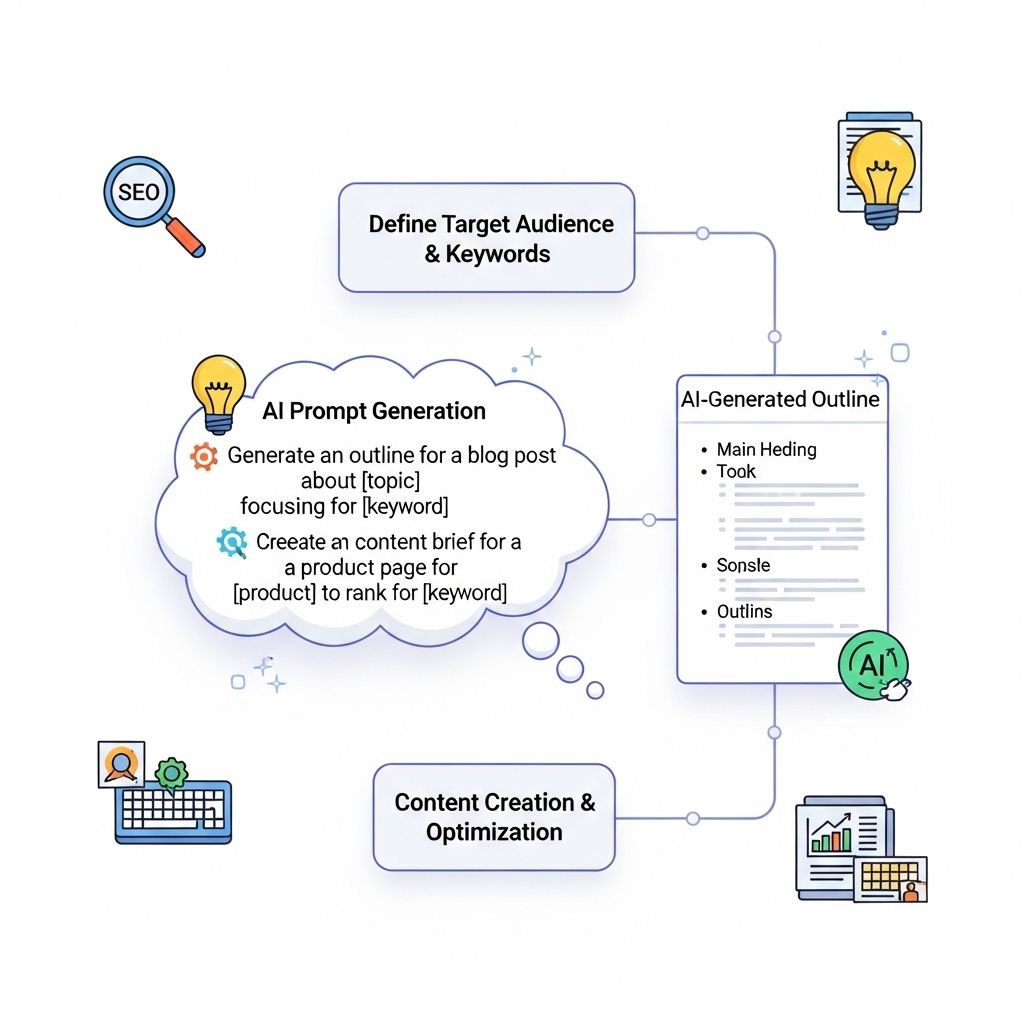In the ever-evolving digital landscape, the importance of search engine optimization (SEO) cannot be overstated. As businesses compete for visibility in search engine results, it becomes imperative to utilize effective strategies to enhance online presence. Outlining your content is one such strategy that can significantly boost your SEO efforts. In this article, we will explore various outline prompts that can help structure your content for maximum engagement and searchability.
Understanding the Importance of a Well-Structured Outline
A well-structured outline serves as a roadmap for your content creation process. It helps in organizing thoughts, ensuring that you cover all essential points, and maintaining a logical flow throughout the article. Here are some key benefits of creating an outline:
- Enhances clarity and coherence in your writing.
- Facilitates better planning of keyword placement.
- Improves readability and user experience.
- Helps in identifying gaps in information that need addressing.
Essential Components of an SEO-Friendly Outline
When crafting an SEO-friendly outline, certain components should be prioritized to ensure effectiveness:
1. Keyword Research
Before you start outlining, conduct thorough keyword research to identify relevant terms and phrases that your target audience is searching for. Tools like Google Keyword Planner, Ahrefs, or SEMrush can provide valuable insights into popular keywords in your niche.
2. Audience Targeting
Understanding your audience is crucial. Tailor your outline to address their needs, preferences, and pain points. This ensures that your content resonates and engages the right readers.
3. Content Length
While there is no one-size-fits-all rule for content length, longer articles typically have higher chances of ranking well in search engines. Aim for a comprehensive approach, ensuring your outline allows for in-depth exploration of the topic.
Outline Prompts to Enhance SEO
Below are several outline prompts that can aid in developing high-quality, SEO-optimized content.
1. Problem-Solution Format
Identify a problem your audience faces and outline your article as follows:
- Introduction to the problem
- Analysis of the issue
- Proposed solutions
- Conclusion and call-to-action
2. Listicles
People love lists! A listicle format can attract more clicks. Use this structure:
- Introduction to the topic
- Item 1
- Item 2
- Item 3
- Conclusion with a summary of the list
3. Step-by-Step Guides
If your content lends itself to instructional material, consider using a step-by-step guide outline:
- Introduction and purpose of the guide
- Step 1: Description and details
- Step 2: Description and details
- Step 3: Description and details
- Conclusion summarizing the process
4. Comparison Articles
Comparison articles can attract readers looking for options. Structure your outline as follows:
- Introduction explaining the comparison
- Criteria for comparison
- Item A details
- Item B details
- Conclusion recommending one option
Creating Engaging Content Using Your Outline
With your outline in place, it’s time to delve into writing engaging content. Here are a few tips:
1. Use Engaging Headlines
Your headlines should be catchy yet informative. Incorporate target keywords to bolster SEO further.
2. Incorporate Visuals
Adding images, infographics, and videos can significantly enhance user engagement. Remember to use alt tags for images to improve SEO.
3. Monitor Readability
Ensure that your content is easily digestible. Use short paragraphs, bullet points, and subheadings to break up large blocks of text.
Measuring Success: SEO Analytics
After publishing your content, it’s vital to track its performance. Here are some metrics to observe:
| Metric | Description |
|---|---|
| Organic Traffic | The number of visitors coming from search engines. |
| Bounce Rate | The percentage of visitors who leave after viewing only one page. |
| Conversion Rate | The percentage of visitors who complete a desired action. |
| Keyword Rankings | Tracking how well your targeted keywords are performing. |
Continuous Improvement and Iteration
SEO is not a one-time task but a continuous process. Regularly update your content, conduct further keyword research, and adapt your strategies based on analytics data. This ongoing effort will help maintain and improve your rankings.
Conclusion
In conclusion, using effective outline prompts can significantly enhance your SEO strategy. By creating structured content that addresses your audience’s needs and optimizing it for search engines, you can improve your online visibility and drive more organic traffic. Remember to consistently monitor performance and iterate on your strategies for long-term success in the digital landscape.
FAQ
What are the best practices for optimizing my website for SEO?
To optimize your website for SEO, focus on keyword research, on-page SEO, quality content creation, mobile optimization, and building quality backlinks.
How can content marketing improve my SEO strategy?
Content marketing enhances SEO by providing valuable content that attracts visitors, encourages backlinks, and improves user engagement, which can lead to higher rankings.
Why is keyword research important for SEO?
Keyword research is crucial for SEO as it helps you understand what your target audience is searching for, allowing you to tailor your content to meet their needs.
What role do backlinks play in SEO?
Backlinks are essential for SEO as they signal to search engines that your content is credible and valuable, helping to improve your site’s authority and ranking.
How does mobile optimization affect my site’s SEO?
Mobile optimization is vital for SEO because search engines prioritize mobile-friendly websites in their rankings, reflecting the increasing number of users accessing sites via mobile devices.
What are the most common SEO mistakes to avoid?
Common SEO mistakes include neglecting keyword research, failing to optimize for mobile, ignoring site speed, and not creating quality content that engages users.




